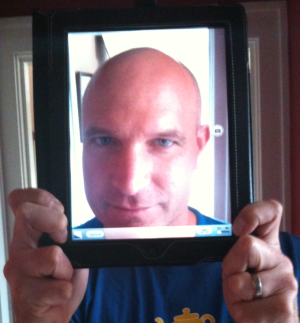iOS6 and the Two Year Life Span
3 min read
On April 3, 2010, Apple's iPad 1 started selling to the public. On September 19, 2012, iOS6 became available for download.
The kicker? iOS6 won't run on the iPad 1.
While the hardware of the iPad 1 is still plenty functional, the lack of even any basic security updates for web browsers and email programs (let alone any of the installed apps on these devices) make the iPad 1 obsolete after two years. From both an environmental place and a budgetary place, this enforced obsolescence is both wasteful and unnecessary.

So, for those of you who were wondering if iPads in schools were on a 2 year or a 3 year replacement cycle, you now have your answer. And for those of you planning on saving money on textbooks on iPads, make sure to update your spreadsheets with the cost of the new device.
Apple has created a system that strongly pushes device churn every 24 months. As schools evaluate the pros and cons of iPad programs, I hope that they take a look at the costs of device churn, and how that churn costs countless person hours in training, updating devices, dealing with bugs in Apple's configuration and management systems, and - most importantly - requires that programs take place within Apple's ecosystem, on hardware that a school purchases but Apple controls.
This is what happens when we cede control to a company that has a strong financial interest in creating the conditions that require us to buy new hardware. If Apple continued to support security releases for older versions of iOS, this would be less of an issue. But, given the closed nature of Apple's software distribution system for the iPad people with older devices are stuck.
Apple sells hardware, and they require that we use their hardware within an increasingly closed system. However, the notion that a perfectly good piece of hardware should be discarded every 24 months to accomodate the business needs of the manufacturer is absurd.
Schools and other learning organizations using Apple hardware need to remember that we are not just observers or consumers here. We can demand better, and demand more, and articulate a rationale against the hype cycle that would like us to believe that newer is better.
More importantly, we can't demand that our students be makers and creators when what we model is passive, unsustainable consumption of the means of production. As a teacher, how can you encourage students to take ownership of their work when their ability to access that work is tethered to a device over which they have limited control.
Maybe we could all protest down at Apple headquarters in Cupertino, provided we used an Android device to access google maps to get there: Or, reverting to iOS5 is another option. But, for the schools who have gone all in with iPad programs, it's hard to talk about these programs in anything but glowing terms, precisely because they cost so much money. And, for schools that are already neck-deep in iPad rollouts, do what you can to make your teacher professional development and curriculum technology-agnostic - this way, when the next thing comes along, your staff and students will be more nimble, and will have the skills and mindset to apply principles that help them learn, regardless of the technology they have in hand.



